Giant Swallowtail Butterflies
Giant swallowtail caterpillars are branded as “orange dogs” in the American south because they eat the foliage of citrus crops including orange trees.
The giants are coming. The largest of Canada’s butterflies – the giant swallowtails – are moving northward again this year, energized by summer’s heat. With wingspans of up to 15cm, these black and yellow butterflies are truly impressive.
Giant swallowtails have long inhabited Ontario’s banana belt – in locales like Windsor and Point Pelee. Only in recent years, likely in response to the warming climate, have they become regular visitors to our part of the province. Heat and sun give butterflies the energy to fly, feed and reproduce.
Giant swallowtail caterpillars are branded as “orange dogs” in the American south because they eat the foliage of citrus crops including orange trees. Here, believe it or not, we have two native plants that are related to citrus trees. The hop tree and a shrub called prickly ash feed the giant swallowtail caterpillars in Ontario.
Hop tree is thinly scattered in the Carolinian zone of the province’s southwest. Prickly ash is more widely distributed across southern Ontario, though not particularly common.
That giant swallowtails can find enough of these widely dispersed plants to sustain their growing population in Ontario beggars belief. Their antennae, used to detect the scent of the plants, must be among the most sensitive instruments nature has ever produced.
You can gain some appreciation of the astonishing plant finding prowess of giant swallowtails by growing rue in your garden. Rue, a European herb, lends its name to the family of plants to which citrus trees and our native hop tree and prickly ash belong.
Rue is a veritable giant swallowtail magnet. Plant it and the giant swallowtails are almost certain to visit your garden.
Be cautious with rue, however, for it can give some people a painful rash. Don a pair of gloves before handling it.

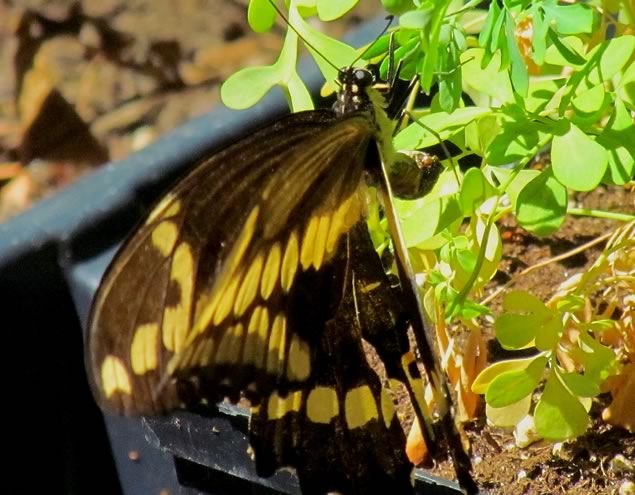
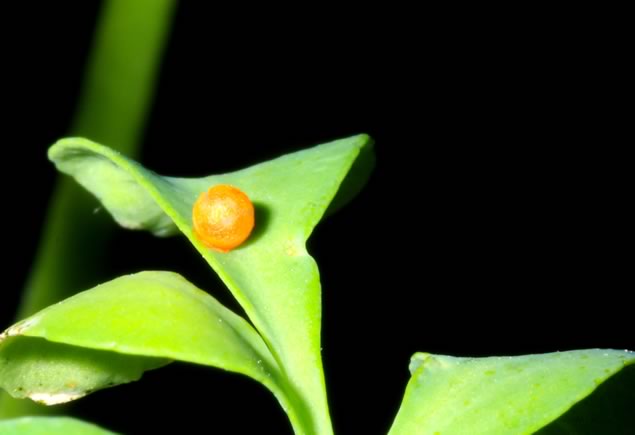
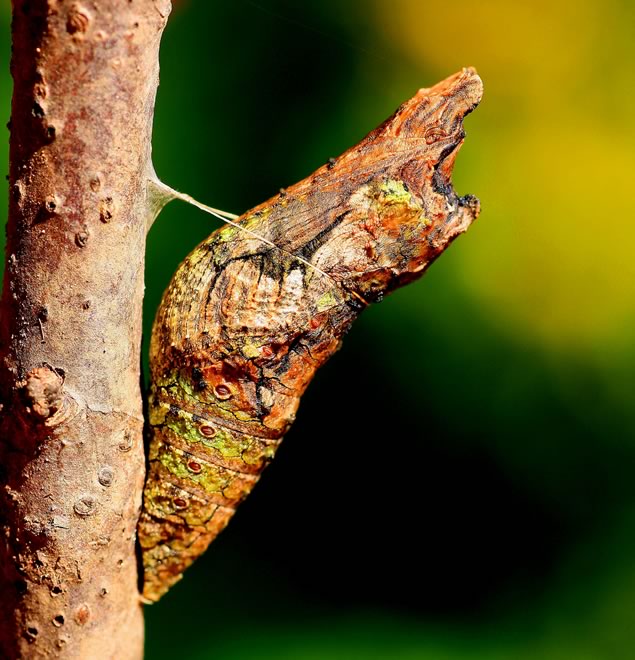
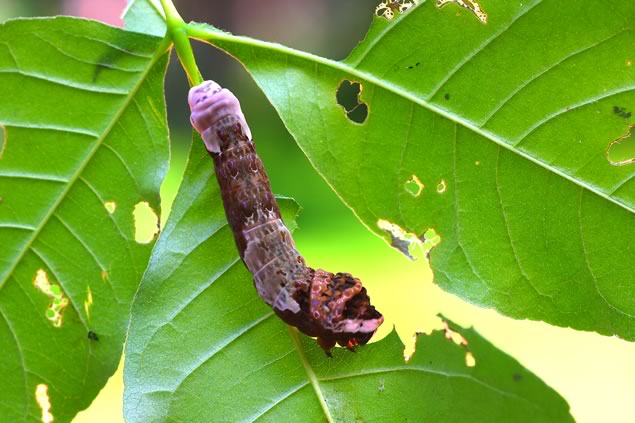
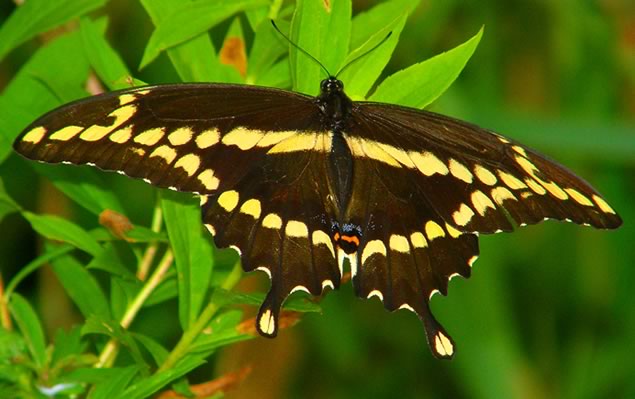
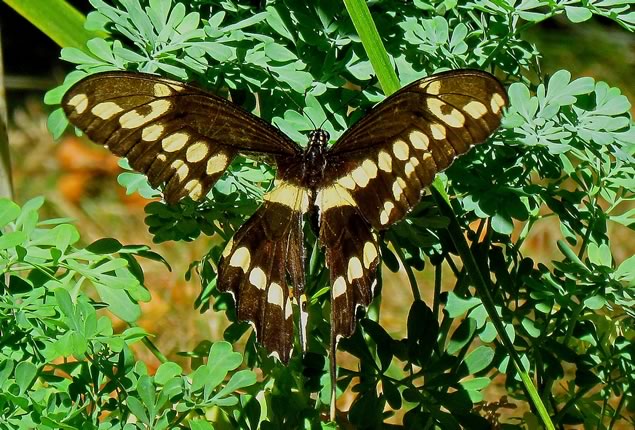






Hi Lorie,
Congrats on the giant. This is a good year for them. Their spread in Ontario is fascinating. They’ve colonized the province at least as far north and east as Ottawa and are now turning up in Quebec as well. Yes, the nectar of thistle attracts them but in future years you may want to offer them some buddleia which they also enjoy. (And the buddleia is a little friendlier than the thistle!) As I mention in the post, rue – available at garden centres – will give these magnificent butterflies something to lay their eggs on. Thanks for the feedback from the beautiful Thousand Islands!
Don on Aug 15, 2018 at 10:02 am |
I am in the Thousand Islands near Gananoque and have witnessed for the first time this magnificent butterfly. I have let our Bull Thistle grow to an incredible height, and everyday I have these beautiful butterflies dining on the purple flowers. I am thankful that I did not eradicate the Thistle.
Lorie Glazier from Thousand Islands on Aug 14, 2018 at 10:14 pm |
Hi Susan,
Giant swallowtails are certainly turning up in your area See blog entries above from the Ottawa area. And coincidently, a friend just sent me a photo of a giant swallowtail flitting about in her garden in Point Claire Quebec. They seem to be expanding to occupy the range of prickly ash, the main food plant of their caterpillars in Canada – and this shrub is certainly found where you live.
If your swallowtail is a giant, I hope it becomes a more regular visitor in your garden. They are wonderfully opulent creatures. The black swallowtail is also beautiful and dill and fennel lures them into my garden.
Thank you for the sighting!
Don Scallen
Don Scallen from georgetown on Jun 18, 2016 at 5:04 pm |
I live in St. Lazare, Quebec…about 20 mins from the Ontario border/Hawkesbury. It is warm here today…25+ anyway. Was gardening and saw a large butterfly. In my Audubon book it would identify as a black swallowtail, but it was light beigey brown. Yes, just like another blogger, it really didn’t mind me being around. It was extremely picky about it’s dinner and finally settled on some annual pinks and it managed very well despite having the lower right quarter missing. I’m wondering whether it is a black swallowtail with a variant colour.
P.S. I have no rue in my garden!
Susan Woods from St. Lazare on Jun 18, 2016 at 2:08 pm |
Have just come inside after watching a Swallowtail butterfly partake of the nectar of my geraniums, petunias etc.
What a beautiful creature, haven’t had the opportunity to see one so close, it seemed unfazed by our closeness and kept coming back for more. I have a perennial bed so think I will try to find some “Rue” I have no idea what it looks like or even if it is available in the garden centres.
Sandra Sheppard from Codrington, Ontario, Canada on Jun 9, 2015 at 4:00 pm |
Hi Sandra! Just looked up Codrington Ontario. How could I have gone through life not knowing about your community?
Make sure it was a giant – check it against my photos. There are lots of its more abundant cousins about right now – the largely yellow tiger swallowtails.
If it was a giant, great! Most large nurseries and some small carry rue – look for it in the herb section along with things like dill, fennel and parsley. (speaking of dill, I have four black swallowtail larvae on one very small dill plant in my backyard right now – so dill is another good caterpillar food plant.)
Hope you have a great butterfly summer!
Don Scallen
Don Scallen on Jun 9, 2015 at 6:50 pm |
Saw two of these butterflies on Sunday 11 Aug 2014 near Clayton Ontario. It was sunny and reasonably warm, about 77 F or so. Their unusually large size caught my eye and they were dark black with vibrant yellow stripes, quite striking, with triangular wings. The pair flitted around together near the water’s edge occasionally coming to rest on the ground for a short time. They seemed to be a pair, as if they were together. Previously the biggest butterfly I had ever seen in Ontario would have been a Monarch.
John Handforth from Ottawa, ON on Aug 13, 2014 at 5:11 pm |
I am happy to see there are so many fellow butterfly geeks. Can’t think of many things that make a summer better than ‘helping’ raise these wonderful creatures and seeing them fly off my hand into the world. I have two Giants and one Black in pupae right now. Got a really cool 10 minute video of one of the Giants making that big final shed. Absolutely amazing on a big computer screen. Ahhhh, summer . . . 🙂
John Smith from Michigan on Jul 11, 2014 at 9:37 pm |
Good to hear from you Paul. The giants are active right now – I saw several last weekend as I hiked through a woodland near Campbellville. Caterpillars were numberous on prickly ash. Yes it is late for the egg laying. Being a predominantly southern species, the giants continue breeding into late summer – this wouldn’t be a problem in Missouri, but it certainly is here. (I suspect as well that the cold, rainy summer has slowed the giant swallowtail breeding cycle which is why we’re seeing so many eggs and larvae now.)
Regardless, caterpillars hatching from eggs laid now will likely not survive long enough to create chrysalides (this is how swallowtails overwinter – not as eggs)
Rearing the caterpillars yourself is easy (as long as their food plant is available) In my experience the chrysalides perish if placed outdoors unprotected. They do overwinter successfully in heated garages – probably best to mist them occasionally. I will try placing my giant chrysalides near the ground this year, protected by leaves and by a wire mesh cover to deter predation, and see if that works.
cheers,
Don
Don Scallen on Sep 7, 2013 at 1:35 pm |
Watched a Giant Swallowtail lay eggs on Rue in my yard today. Collected five. Seems rather late but an aquaintance saw a female due the same at her house yesterday. Anyone know if the eggs over winter. Also found three small GS larvae while collecting the eggs.
Paul Gross from Kitchener on Sep 6, 2013 at 5:49 pm |
I thought this would be the ideal place to share my Giant Swallowtail story:
About three weeks ago, we saw our first Giant Swallowtail, flitting around our garden. (we are about a half hour south of Ottawa). Shortly thereafter, the butterfly landed on the screened window of our back deck. We were amazed at the size and beauty of this creature, plus the fact that it had decided to honour us with its presence. We didn’t think it would remain on the window for long, and thought that at any moment, it would be on its way. Little did we realize the butterfly had other ideas…
It hung on the window for three days. Once in awhile it would shift positions slightly or flap its wings, but it never left the spot. On the fourth day, the weather turned nasty – this was the day that we experienced the wrath of Hurricane Sandy. With winds of almost 100 km/hour, we feared for the safety of the butterfly, so we captured the little beauty and brought him/her? inside, where we prepared a home in a large container. With 6 cats in the house, we had to find a secluded place for our little guest, and did so, in a spare room. We subsequently contacted a regional entomologist for info on what to feed an adult Giant Swallowtail. We found out that the best foods are a honey/water mixture, and sliced oranges! Our little guest, whom we named “OJ” did partake of both offerings, but really loved the orange slices!
We would let OJ out to fly around the room every day, after his breakfast of orange nectar. The entomologist was fascinated with our story, as he is himself a butterfly enthusiast who raises Giant Swallowtails. However, he has never had the opportunity to “know one” as an adult. And our story was even more interesting based on how rare this species is in the region.
We knew the butterfly would not live long, as the adults don’t. But we were determined to give OJ the best life we could for as long as he was with us.
OJ died the day before yesterday, after having survived 15 days with us. Despite the fact that we were prepared for this to happen, we were very upset. The room seemed so empty. I can’t explain what a thrill it was to have been able to get up close and personal with such a beautiful, yet wild creature, who came to trust us enough to sip orange nectar, while perched in our hands.
We feel honoured to have been accepted by this marvel of nature.
Marlene Harris from south of Ottawa on Nov 15, 2012 at 2:54 pm |
Dear Marlene,
I’m intrigued by the late arrival of your “giant” visitor. Perhaps it emerged from a chrysalis even further north and was making its way south. (Apparently giant swallowtails migrate south in the fall as do monarchs.) Perhaps it could go no further because of cooling temperatures.
We are witnessing an interesting phenomenon with these lovely beasts – what appears to be a significant range expansion to the north. In this process many giants will likely perish before they complete their life cycles, but some may have the genetic wherewithal to survive and consolidate their “beachhead” here in the north.
We have much more to learn about this butterfly in Canada and it will be exciting to watch them in the years to come. If you are not afraid of the caustic properties of rue, do try it in your garden!
cheers,
Don Scallen
Don Scallen on Nov 17, 2012 at 10:38 am |
I have also noticed quite a few Giant Swallowtails in the garden this year. I had planted some rue since the Black Swallowtail caterpillars were eating all of my dill (I raise them inside) and when I found eggs on the rue they turned out to be Giant Swallowtails. I took the eggs inside and have been raising my first Giant Swallowtail cats. Two of them are getting ready to pupate and 6 more are quite small. I’m thinking they will overwinter as chrysalides but am not sure.
I’ve also raised quite a few monarchs so far this summer and the biggest thrill of all: Pipevine Swallowtails! Found a female laying eggs in my Dutchmen’s Pipe vine and took the eggs inside. 26 hatched successfully and 26 butterflies have been released. Currently I have 72 more Pipevine cats eating me out of house and home! Pipevine swallowtails are listed as “temporary colonists” for the Hamilton area.
Thea Wiersma on Aug 13, 2012 at 12:49 pm |
Hi Thea,
Nice to know there are some other caterpillar nuts out there! Polyphemus and Cecropia cats have eaten me out of house and home this summer.
I tried to overwinter giant swallowtail chrysalids last year but all perished. I put them in a mesh container and hung them from a tree. However, a friend overwintered them in his unheated garage and they all survived. So… it looks like they may need a little protection in our climate.
I’m envy you and your pipevine cats! I don’t think I’ve ever seen a pipevine swallowtail in Canada. As you know they are quite rare, so congratulations! Perhaps the appearance of the pipevine swallowtail in your yard is part of the general northward movement of southern butterflies this year. Along with the giant swallowtails I’ve also observed two buckeye butterflies this summer, another southern species.
Don Scallen on Aug 14, 2012 at 10:42 am |
Hi Don
Thought I’d give you an update on my Giant Swallowtails. I had 4 GST and 4 BST chrysalides overwinter in our unheated garage. I brought them in at the end of April. I am thrilled to tell you that all of them have successfully emerged! What a joy to watch them flutter away! Sure hope they survive – I haven’t seen too many butterflies around here yet this spring. Quite a change from last year.
Thea Wiersma on May 24, 2013 at 8:56 pm